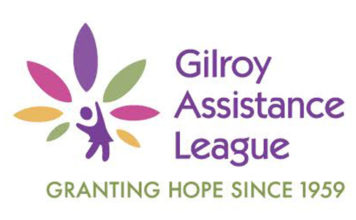Dear Editor,
Why are the Gilroy High School SAT math scores below both the
county and state averages? This was a question that was addressed
at a recent school board meeting.
Dear Editor,
Why are the Gilroy High School SAT math scores below both the county and state averages? This was a question that was addressed at a recent school board meeting.
Denise Apuzzo places the blame on the math department. She said, “her daughter had not learned many of the math concepts that appeared on the college practice exams,” and blames the math department for not teaching the necessary skills to pass the exam.
One of the school board trustees agreed that the data collected on the SAT scores, “validates the school’s low standardized test scores in math and shows a need for improvement of the GHS math program.”
Assistant principal Greg Camacho-Light said, “the high school is responding to the deficiency and is putting more rigor back into the GHS’s math department.” He presented data comparing SAT scores over the past six years between Salinas, San Benito and Live Oak high schools. He provided information on “factors that determine participation and scores” and summarized what GHS officials are doing to help bump up scores.
I am tired of reading in the Dispatch the countless reports, data and summaries presented by our school officials. I am tried of people blaming the high school teachers and the math department for the low SAT math scores. Math taught in today’s elementary and middle school classroom is the same math taught in the ’60s: 1+1 still equals 2, 7 x 7 still equals 49 and 144 divided by 12 still equals 12. However, for some reason a high percentage of students who are not learning basic arithmetic, graduate and enter high school.
Let’s stop blaming the teachers. Let’s look at the student-to-teacher ratio. Should an elementary teacher be expected to teach basic arithmetic to a class of 25 to 30 students? Should a high school teacher be expected to teach algebra to a class of 28 to 32 students? The top five students might function under these conditions, but what about the other 25? Can teachers be effective when teaching to a 30-to-1 ratio? Under such conditions, does a teacher have a choice but to teach to the average student (or the below-average student)? So what happens to the student that is struggling? Would it help if the high school day were rescheduled so the classes met daily for 70 minutes, instead of the 118-minute every-other-day schedule?
Is the average GHS math student motivated to learn math? Do they participate and ask questions during class time? Does a struggling student spend time attending tutorial classes, turn in their homework and prepare for quizzes and tests?
Does the average parent hold their child accountable to do their homework, prepare for quizzes and tests and get good grades? Do they sit down together and check their homework and understanding of the material. If their child is struggling and they lack the basic knowledge to help, what steps are they take to find help? Do they encourage their child to attend workshops and after-school tutorial programs? Are parents concerned whether their child is getting enough sleep and eating a balance diet?
At the same board meeting, Camacho-Light said, “I think it’s important to find out who the student that’s sitting down to take the SAT is.” I agree. Who’s taking these tests? What classes had they taken and grades received? How are they preparing? Are students reviewing questions that had been asked on previous SAT exams and use the commercial SAT study test guides?
A recent Dispatch story reported the high school now offers about eight pre-algebra courses. Cathy Silva, a GHS math teacher “pointed out that the freshman and sophomores in her Thursday morning pre-algebra class tested at the third-grade level in math.”
These students had not mastered their addition and multiplication. Does that mean these students graduated from middle school not knowing how to add and multiply? Does this mean there are still mainstream freshman and sophomores learning their time’s tables at the high school?
In conclusion, should anyone be surprised the GHS SAT scores are below both the county and state averages?
Alan L. Johnson, Gilroy











